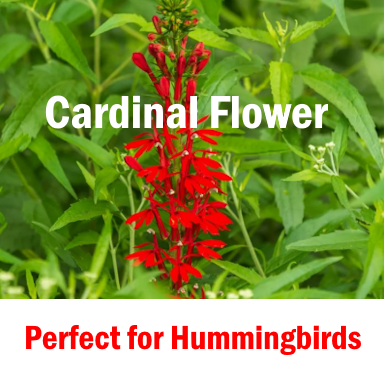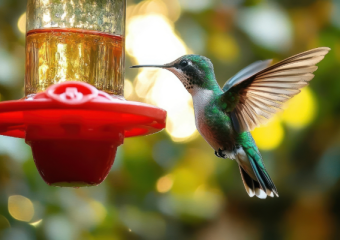Stunning Epiphytic Plants: Must-Know Secrets & Benefits, Some Even Support Hummers!
Epiphytic plants, often seen clinging to tree branches in lush forests, harbor a unique charm and an ecological niche that might surprise many gardening enthusiasts. These plants, such as the striking cardinal air flower, have evolved to thrive in what might initially seem like unwelcoming territories atop other plants. A fascinating aspect of these plants is their relationship with hummingbirds, as they frequently access the free-flowing nectar these plants offer.
What are Epiphytic Plants?
Epiphytic plants are organisms that grow on the surface of other plants, usually trees, without deriving nutrients from their host. Unlike parasitic plants, which extract nutrients from their host, epiphytes solely use the host as a physical support. They source their nutrients from the air, rainwater, and debris accumulating around their growing surface. Orchids, ferns, and bromeliads are among the most popular types of epiphytic plants, with the cardinal air flower, a type of bromeliad, being particularly noted for its vivid red bloom that attracts hummingbirds.
The Unique Adaptations of Epiphytic Plants
To survive in what can be described as a precarious position, epiphytic plants have developed several fascinating adaptations. Their roots, for instance, are typically not used for absorbing nutrients from the soil but rather serve to anchor them securely to the rough bark of their host tree. Some epiphytes, like certain orchids, have velamen roots that absorb moisture directly from the air. Others have specialized leaves that can collect and store rainwater, or scaly structures called trichomes that absorb nutrients from the dust and decaying leaves around them.
Do Epiphytic Plants Harm Their Host?
A common misconception about epiphytic plants is that they might harm their host plants by leeching nutrients from them. However, epiphytes are generally not harmful to their hosts. Since they do not take any nutrients from the tree itself and only use it as a support, there is usually no adverse effect on the host plant. The main risk a host tree might face is bearing excessive weight from a large colony of epiphytes, which is rarely a concern under natural conditions.
Attracting Hummers: The Role of the Cardinal Air Flower
The cardinal air flower, with its radiant red petals and open, inviting structure, is particularly adept at attracting hummingbirds. These birds play a crucial role in pollination, transferring pollen from one bloom to another as they move around seeking nectar. The free nectar produced abundantly by the cardinal air flower provides vital nutrition to these tiny birds, making it a symbiotic relationship—the plant gets pollinated while the hummingbirds get nourished.
Where are Epiphytic Plants Found?
Epiphytic plants predominantly find their home in tropical and subtropical forests, where the environment is moist and trees are plentiful. These conditions allow them to thrive without the need for soil. Regions such as Central America, South America, and the Caribbean are hotspots for a diverse range of epiphytic species, including numerous orchids and bromeliads.
Can You Buy Epiphytic Plants at a Garden Store?
For gardening enthusiasts interested in adding epiphytic plants to their collection, many garden stores and nurseries do offer these unique plants, particularly more common types like orchids and smaller bromeliads. Growing them at home requires mimicking their natural environment as closely as possible—providing plenty of indirect light, high humidity, and letting them grow on a piece of bark or suspended in the air, rather than in standard potting soil.
Conclusion
Epiphytic plants like the cardinal air flower represent a fascinating part of plant evolution and ecology. Not only do they offer a spectacular visual addition to any garden or home, but they also contribute to biodiversity by supporting pollinators such as hummingbirds. Understanding and appreciating these remarkable plants can open up a new dimension in gardening and offer a glimpse into the complexity of natural ecosystems. Whether displayed on a piece of driftwood or hanging gracefully from a basket, epiphytic plants can bring a touch of the exotic to any setting.





